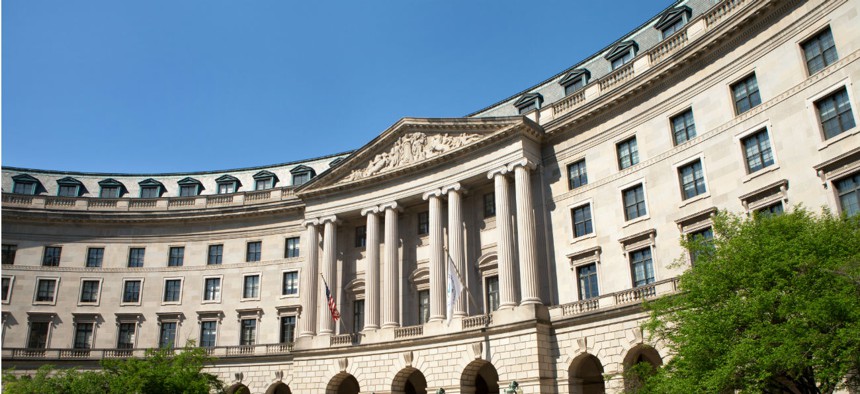EPA Calls Reporting on Proposed Rulemaking Update ‘Completely Misleading’
New York Times story lacks an “understanding of the rulemaking process,” said EPA.
The Environmental Protection Agency is disputing The New York Times’ reporting on the agency’s upcoming proposed rule on the role of science in the regulatory process.
On Monday, The New York Times reported a new draft of the EPA’s Strengthening Transparency in Regulatory Science rule that modifies a 2018 version. According to this draft, scientists would be required to disclose all of their data (including medical records) before the EPA would consider their study’s findings. The rule would retroactively apply to pre-existing public health regulations, which the agency said is in the interest of transparency. According to The New York Times, this version didn’t appear to consider the opposition to the rule from the public comments to the 2018 draft.
Many in the scientific and public health community criticized this potential rule. “Scientific leadership has been the hallmark of American government, and a driving force behind many of the great successes of our nation,” said Tim Whitehouse, executive director of the nonprofit Public Employees for Environmental Responsibility. “This proposed rule calls into question the very foundations of most environmental protections and will sow chaos in EPA’s ability to protect public health and the environment–but that seems to be the point of the proposed rule.”
The EPA, however, disputed the characterization of the reporting. An EPA spokesperson told Government Executive:
The New York Times reporting has numerous errors and is based on a leaked preliminary, draft version of the supplemental, not the actual text submitted to [the Office of Management and Budget]. On Friday, November 8, EPA delivered to OMB a draft supplemental Federal Register notice (FRN) to clarify, modify and supplement certain provisions included in the 2018 proposed Strengthening Transparency in Regulatory Science rule. The 2018 proposed rule solicited comment on all aspects of the proposed rule. This supplemental FRN solicits comment only on the changes and additions to the proposed regulatory text discussed in this supplemental notice. The agency still intends to issue a final rule in 2020. This final rule will take into account the comments received in response to both the 2018 proposed rule and this supplemental FRN as well as those submitted by the Science Advisory Board.
Additionally, in a press release on Tuesday, the EPA said it’s “completely false” that the proposal will apply to pre-existing regulations and that the rule will not make it more difficult to enact air and water rules. The agency also said transparency will not weaken science.
Initially, an EPA spokeswoman told The New York Times in an email, “The agency does not discuss draft, deliberative documents or actions still under internal and interagency review.”
The draft rule from April 2018 was the result of former EPA Administrator Scott Pruitt’s desire to combat “secret science" in the regulations process. “The rule will ensure that the regulatory science underlying agency actions is fully transparent, and that underlying scientific information is publicly available in a manner sufficient for independent validation,” a press release stated.
In May 2018, environmental scientist Elizabeth “Betsy” Southerland, who abruptly left EPA in August 2017 after 30 years, told Government Executive the proposal “was drafted solely by the political team [and] the first time the civil service people saw it was” when the public did.
The role of science in EPA’s rulemaking process will be the subject of a House Science, Space and Technology hearing on Wednesday. Principal Deputy Assistant Administrator for Science for the Office of Research and Development and the EPA Science Adviser Jennifer Orme-Zavaleta will testify, along with other public health and science experts.
In the Trump era federal employees at the science-based agencies have felt disenchanted and shut out. A recent report from the Brennan Center, written by former government officials, said the system for protecting federal scientists from political interference is incomplete and broken. “We have seen efforts to recast the scientific and research communities as little more than special interest groups whose conclusions carry no more weight than those of other such groups,” they wrote, and added such efforts can lead to “flawed government policy.”
Despite the actions from his administration, President Trump said on Tuesday at the Economic Club of New York, “I consider myself to be, in many ways, to be an environmentalist, believe it or not.”
NEXT STORY: When Government Does Not Work: A Primer




